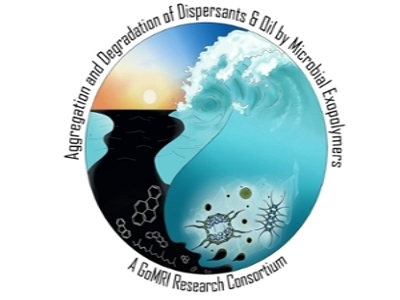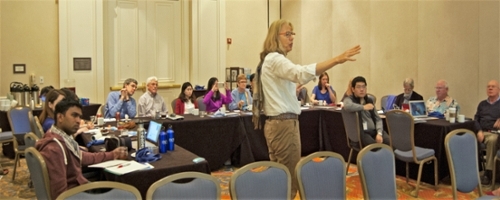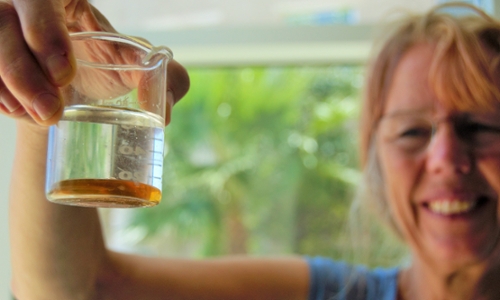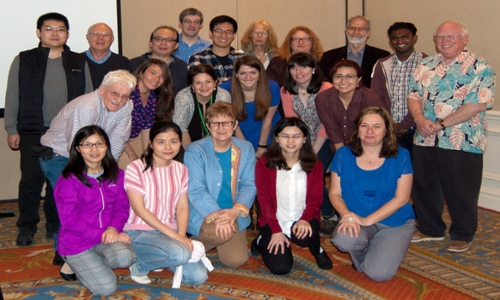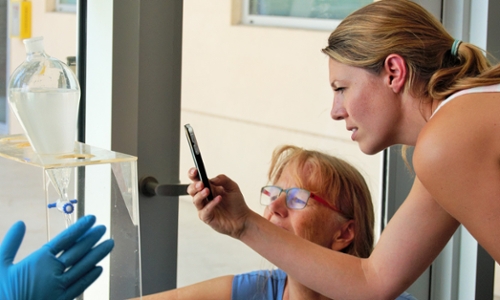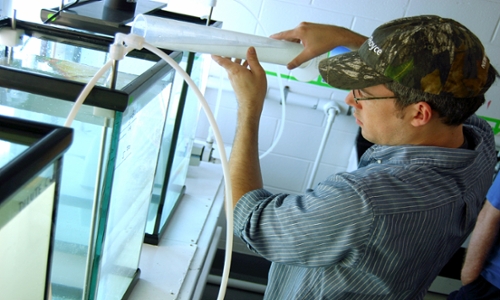Aggregation and Degradation of Dispersants and Oil by Microbial Exopolymers
Aggregation and Degradation of Dispersants and Oil by Microbial Exopolymers (ADDOMEx)
Vision and Mission: While it is known that weathering and hydrodynamic forces affect both the distribution and properties of the oil released, and that opportunistic microbes play an important role in its degradation, there are few studies examining the interactions between oil, microbes (phytoplankton, bacteria), and their exudates. Our Vision is to understand how the presence of hydrocarbons triggers production of exopolymeric substances (EPS) that may protect organisms from the oil, emulsify the oil, or both, therefore altering its degradation. The interaction among EPS, oils, and the local environmental factors plays a critical role in determining the fate of oil (e.g., degradation, dispersion, or sedimentation) from oil spills. Hence, our Mission is to develop a process-based understanding of the role that EPS, micro-gels, and transparent exopolymer particles (TEP) play in the fate of oil (e.g., degradation, dispersion, or sedimentation) and, in addition, how the dispersant Corexit affects these processes.
Approach: The objective is to establish a mechanistic understanding for the interactions among the microbes, oil, and the dispersant (Corexit), and EPS, micro-gels, and TEP under various environmental conditions. The activities are tightly integrated in sequences of experimental tiers, with the findings in each tier constraining activities at the next tier level. Small-scale lab microchip and batch culture experiments will allow us to test a large number of concentrations and factors driving the oil-microbe interactions, which then determine which combinations are used at the roller table and mesocosm tiers. In turn, the interpretation of complex interactions at the higher tiers (mesocosms) will be guided by the outcomes of the simpler microchip/batch culture and roller table experiments.
Scientific and Societal Impact: Our research will show that the marine microbial community actively responds to oil/dispersant challenges by regulating its EPS release accordingly, and that the EPS released interacts with the oil/dispersant. These results will enhance the fundamental understanding of how marine microbes (both phytoplankton and bacteria) and their exudates physically determine the fate and transport of oil and dispersants in the ocean. This information can serve as the basis to establish improved predictive models for the risk assessment, to develop potential interventions to reduce the environmental impact, and to formulate better responding/management plans for future oil spill incidents.
Consortium Members: Led by Texas A&M University researchers from Marine Biology and Marine Science (Galveston Campus), Oceanography and the Geochemical and Environmental Research Group (College Station), researchers will be responsible for project management and leading laboratory experiments and field collections. Collaborators will support microbe and exudate analysis and include: the University of California, Merced, for the bacterial microfluidic chips, micro-gel aggregation, microscopy study, and minority educational outreach; the University of Southern California to examine the prokaryotic microbial (bacteria and archaea) community structure and activity; Mount Allison University (Canada) to examine phytoplankton community structure and activity; the University of California, Santa Barbara, to investigate the role of microbial EPS production for aggregation/degradation/dispersion of oil/dispersant using roller table experiments; and Old Dominion University to analyze the exudates with multiple state-of-the-art instrumentation. Texas Sea Grant will provide their support for outreach activities through its well-established state-wide and national networks. Consortium members have extensive experience working in the northern Gulf of Mexico and are uniquely qualified to study the molecular-level chemistry of sparingly-soluble substances in complex systems. While the work will be focused on examining biological and chemical phenomena, we will include physical dynamics in order to better understand the multi-factorial consequences of the spill on the system by using data from the TABS buoy network.
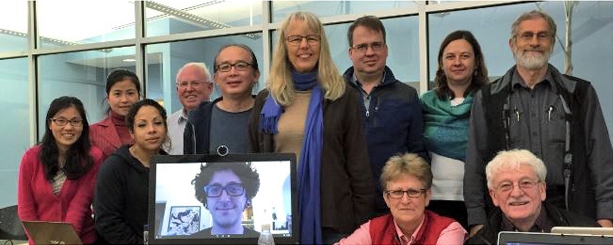
ADDOMEx team at initial hands on meeting in January 2015. Team members (left-to-right): Saijin Zhang, Chen Xu, Marcella Nunez, Patrick Hatcher, Wei-Chun Chin, Jason Sylvan (on screen), Uta Passow, Andrew Irwin, Kathy Schwehr, Antonietta Quigg (lead), Peter Santschi, Terry Wade and Zoe Finkel (photographer).
